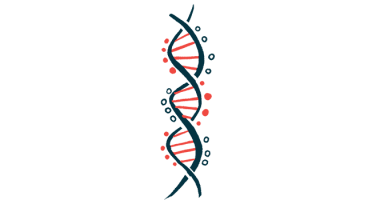PWS Patients With Chromosome 15 Deletions More Prone to Obesity, Study Contends

Children with Prader-Willi syndrome (PWS) whose disease is caused by a deletion in part of chromosome 15 may be more prone to obesity than others with non-deletion disease causes, a study suggests.
Different gene expression in the brain likely explains the variability in patients from each group, researchers said.
The study, “Growth Trajectories in Genetic Subtypes of Prader–Willi Syndrome,” was published in the journal Genes.
PWS is caused by the loss or dysfunction of paternal genes in chromosome 15, which control metabolism, appetite, growth, intellectual abilities, and social behavior.
The defect occurs because a region in the maternal chromosome 15 is shut down, in a natural process called genomic imprinting. When paternal genes in this region are also lost, patients have little-to-no production of resulting proteins.
PWS also may be caused by non-deletion abnormalities, including the inheritance of two chromosomes 15 from the mother, both of which are shut down in the region of interest, or an imprinting defect that also shuts down the parental chromosome.
Patients with the deletion and non-deletion subtypes have several overlapping symptoms and clinical features, but some differences between groups also exist. While the deletion subtype is generally linked to lower cognitive ability, inheriting two maternal chromosome 15 copies increases the risk of autistic-like behaviors and mental health issues.
Researchers at the Murdoch Children’s Research Institute, in Australia, set out to compare growth trajectories of patients in each group, which may help further understand their differences and determine whether subgroups of patients should receive distinct management approaches.
The study included 125 PWS patients from the Victorian Prader–Willi Syndrome Register (VPWSR), with a known molecular mechanism of disease, and at least one height and weight measurement. Most (95.2%) had repeated measurements for weight and height over their childhood and adolescence, with a median of 28 observations per patient.
The group included a similar number of girls and boys, 57.6% of whom had a paternal deletion. The remaining 42.4% had a non-deletion cause for their disease. At the assessment, children with deletion had an average age of 7, while children in the non-deletion group had an average age of 4.7.
In girls, height was generally similar between subgroups until age 10, after which those with non-deletion PWS had a slower gain in height. Height in boys evolved in a similar way in both groups.
When compared to the normal growth range established by the Centers for Disease Control and Prevention, both girls and boys remained below the 50th percentile across ages and regardless of genetic cause.
All groups weighed more than healthy people of the same age, but weight was generally higher in patients in the deletion group throughout the years, and regardless of sex.
Compared to people of normal weight, girls and boys in the non-deletion group had an average predicted weight above the 75th percentile starting at ages 5 and 7, respectively, while those in the deletion group were above the 90th percentile.
Much like weight, body mass index (BMI) also tended to be higher in children from the deletion group, across all ages and regardless of sex. The greatest difference in girls was observed at age 15, where those in the deletion group had a mean of 4.8 more units than the non-deletion subgroup. For boys, the greatest difference was observed at age 5, with a 4.9 point difference in BMI.
Researchers then conducted statistical analysis to directly compare the average rate of growth between the deletion and non-deletion groups across ages and sex.
Overall, no significant differences in height were seen in girls across ages, but boys between ages 5 and 10 in the non-deletion group grew 1.4 centimeters (cm) more per year than those in the deletion group. For boys ages 10 to 15, however, those in the deletion group grew on average 2.8 cm more per year than the other group.
Regarding weight, girls showed significant differences only between the ages of 10 and 15, with those in the non-deletion subtype gaining an additional 1.6 kg (3.4 lbs) per year, compared to patients in the deletion group. In boys, the opposite was found; participants with the deletion subtype were gaining about 3.7 more kg per year at that age than the non-deletion subgroup.
Finally, BMI was significantly different only in girls younger than 2. In this age group, children in the deletion group gained about 1.4 more in BMI per year than their non-deletion counterparts. A similar trend was observed in boys within the same age.
“Collectively, these results suggest that deletion PWS patients are more prone to obesity with advancing age, although the underlying mechanisms are not clear,” the researchers wrote.
“We hypothesize that these differences may stem from known neurobehavioral differences between the subtypes and subtype-specific differences in gene expression,” they added.
They also said that no data existed regarding diet, use of hormone therapy, and physical activity in these groups, which was a limitation in the study.






